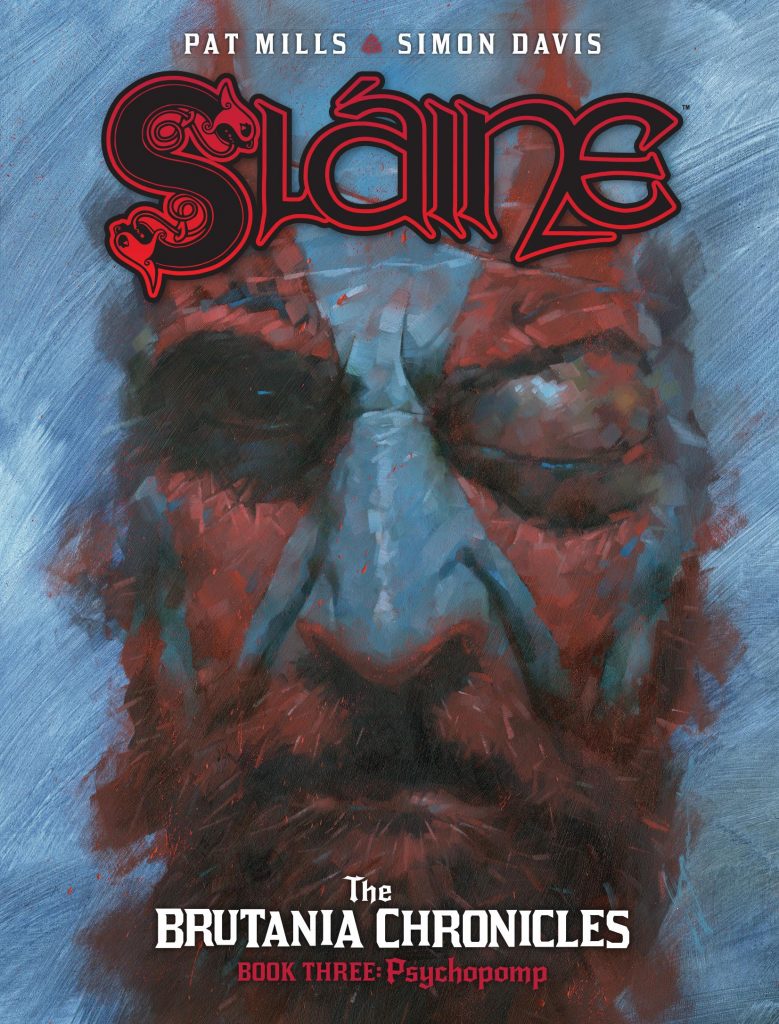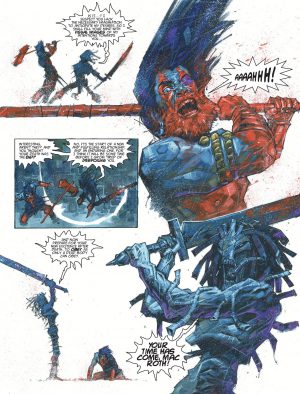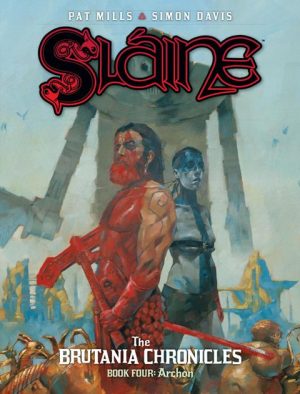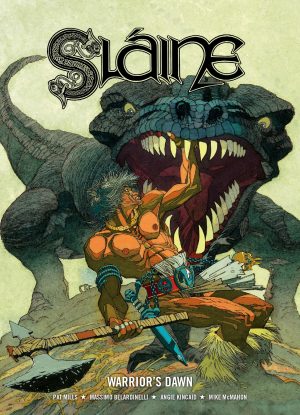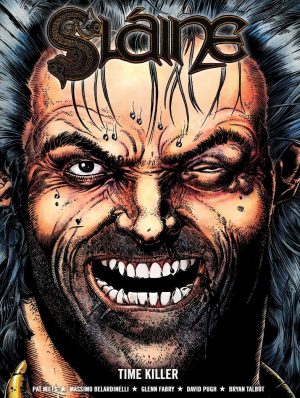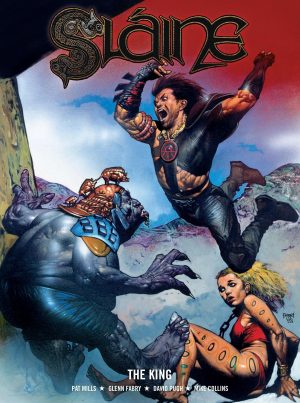Review by Jamie McNeil
The title Psychopomp refers to The Brutania Chronicles’ main antagonist Slough Gododin, an honorific title of some kind never fully elaborated on. That’s probably because writer Pat Mills doesn’t have time because Sláine is too busy facing the Drune Lords and their minions in one battle after the other.
Simon Davis renders the wall-to-wall scrapping incredibly well, using lush colours for the present and sepia hues for flashbacks. The latter are the most impressive exploring both Sláine’s past and his fractured psyche. For his armies Davis adds a ghoulish look for a classic fantasy feel, though the art is more modern. For both the settings and heroine Sinead, Davis takes inspiration from South African Afrikaans rap-rave group Die Antwoord’s bizarre style. Sinead herself is modelled on female member Yolandi Visser, the similarities visible from the hair to the clothes. There is an air of madness to Davis’ art that suggests he watched a number of their bizarre and controversial videos while working on The Brutania Chronicles.
While Pat Mills claimed this a fresh start for Sláine, it’s more like a redevelopment, working off old concepts to really explore his character. That is in itself a completely new direction for the series, as most previous Sláine tales concern fighting, questing, “haunching” and more fighting, held up by the dwarf Ukko’s comedic efforts. Emotionally Sláine has never had much depth, though that doesn’t mean he has been without emotion. It simply isn’t something that’s defined him, but it’s a different story here as emotion threatens to derail him. Alone in the world without his family, his tribe or his friends, self doubt is undermining his confidence. His enemy is capitalising on the childhood trauma caused by an ambivalent father and his mother’s death. It’s an interesting perspective that keeps the story moving forward while adding substantial depth to Sláine himself.
Sláine’s artistic look and style has been largely influenced by the artists who worked on him, often giving Sláine their own features and mannerisms. What if this Sláine reflects Mills in the same way, this older retrospective warrior battling age and uncomfortable revelations a reflection of his creator? When Sláine’s enemies have been religiously oppressive, Mills’ personal opinions have always been clearly noticeable. It raises the question of whether there has always been more of the creator’s personality in the creation than readers realised. Ultimately, only Mills himself along with his family and closest friends can really say but it is an interesting thought.
The Brutania Chronicles conclude in Book Four: Archon.
